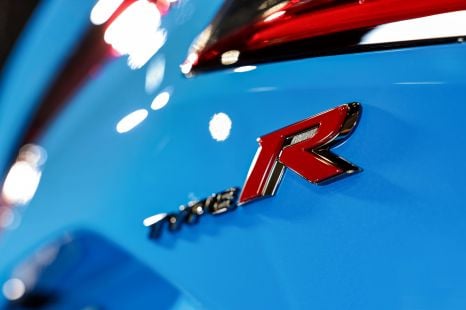

Damion Smy
Honda Prelude Type R ruled out... for now
8 Hours Ago
It's a bona fide Lamborghini supercar that doesn't need a front lift kit, while ride comfort is guaranteed on the world's worst roads.
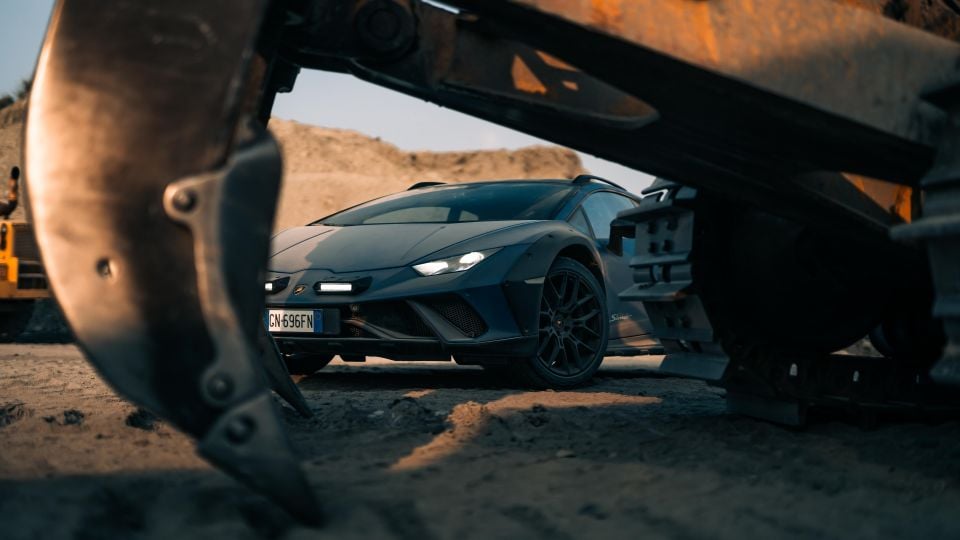


Quickly see how this car stacks up against its competition. Select any benchmark to see more details.
Where expert car reviews meet expert car buying – CarExpert gives you trusted advice, personalised service and real savings on your next new car.
It’s not that I’ve ever had a burning desire to belt around off-piste in the rolling farmlands of Tuscany in a naturally aspirated V10 Lamborghini supercar, but driving one of Sant’Agata Bolognese’s most outrageous creations ever, is pure bucket list stuff.

The mere act of going rogue in the mud in a half-a-million-dollar Italian exotic seems utterly profane, but that’s exactly what the Lamborghini Huracan Sterrato (‘dirt road’ in Italian) has been designed to do. And in doing so it joins the Porsche 911 Dakar as the most useable (if not the most comfortable) supercar on the planet – both on and off the tarmac.
It’s also the very last of its breed and the precise point at which Lambo’s head of design, Mitja Borkett, simply ripped up the rule book to create one of the most exciting supercars ever conceived. This from a carmaker whose reputation was forged by pushing design limits to the very edge of the extreme.
Think of the Miura in 1967 – a car that not only defined the brand but also singlehandedly invented the supercar with its title of the world’s fastest production car. It was also undeniably one of the most beautiful cars ever made, thanks to the considerable drawing skills of Bertone’s Marcello Gandini.
Then came the spaceship-like Lamborghini Countach in 1974, another Gandini design winner and just as head-turning today as it was during its unapparelled 16-year reign as the ultimate V12 poster car.

The Raging Bull brand also managed to conceive and build the world’s first super-sports SUV when it launched the LM002 in 1986, which dropped the V12 from the Countach into the engine bay.
Nevertheless, it’s been a long wait for a rally-inspired Lamborghini when you consider Huracan launched back in 2014, followed by a mid-life update in 2019. But that’s pretty much standard supercar practice of saving the best to last.
There’s no mistaking it for any other Huracan variant either, including the equally outrageous STO, because I’d argue the Sterrato is even more brand defining. Just don’t expect to see one on the road – no matter where you might hail from.
Just 1499 Huracan Sterratos will ever be built, thereby assigning it to instant collectability should the powers that be at Lamborghini HQ stick to such a limited production run. I for one hope it makes a few more thanks to its unique everyday usability in an extreme segment.
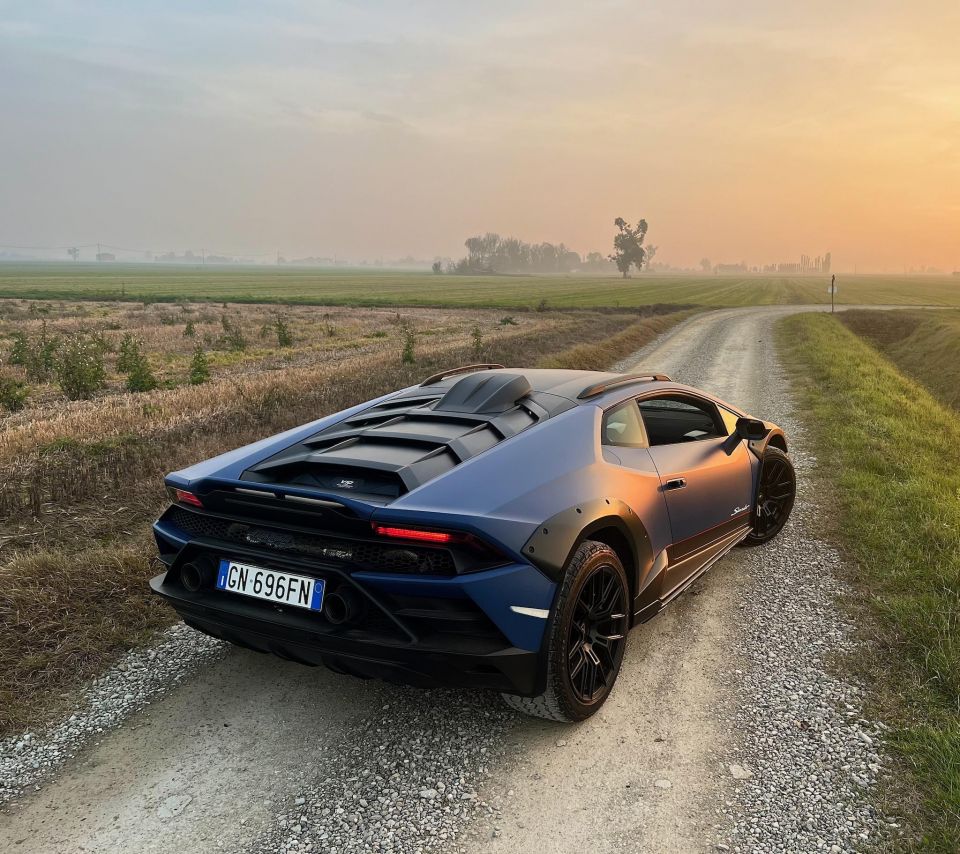
Whereas most supercars sit precariously close to the ground with front splitters being particularly susceptible to the odd scrape or two with driveways, speed bumps and those ever-present potholes, the Sterrato is effectively immune from this thanks to a few inherent design features.
There’s no bonnet scoop but there is an unmistakable ‘roof scoop’ that feeds cleaner air to the mid-mounted V10 for when you’re off the beaten track.
All four wheel arches and associated bodywork are protected by stone-deflecting composite cladding, with extra-large rivets to keep it there – in case you clip a hay bale or two while checking on crops and livestock.
Crucially, ground clearance has also been lifted by 44mm compared with the Huracan EVO, and with that comes extra suspension travel for ironing out those crater-size potholes that seem all too common these days.
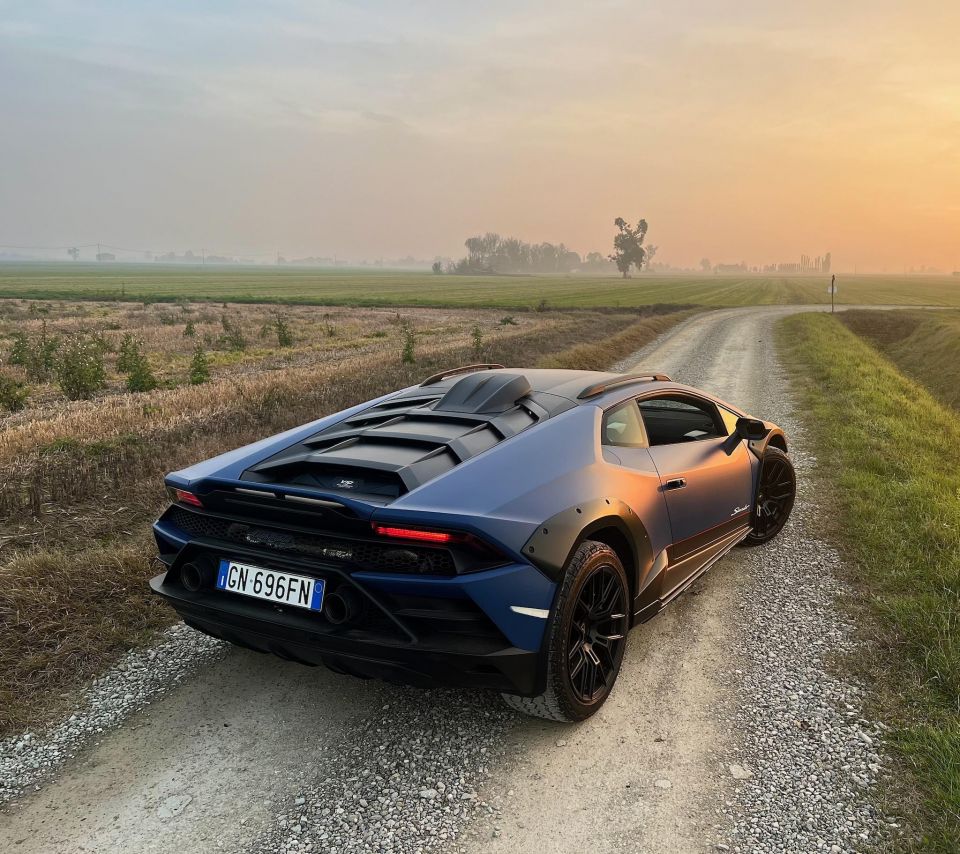
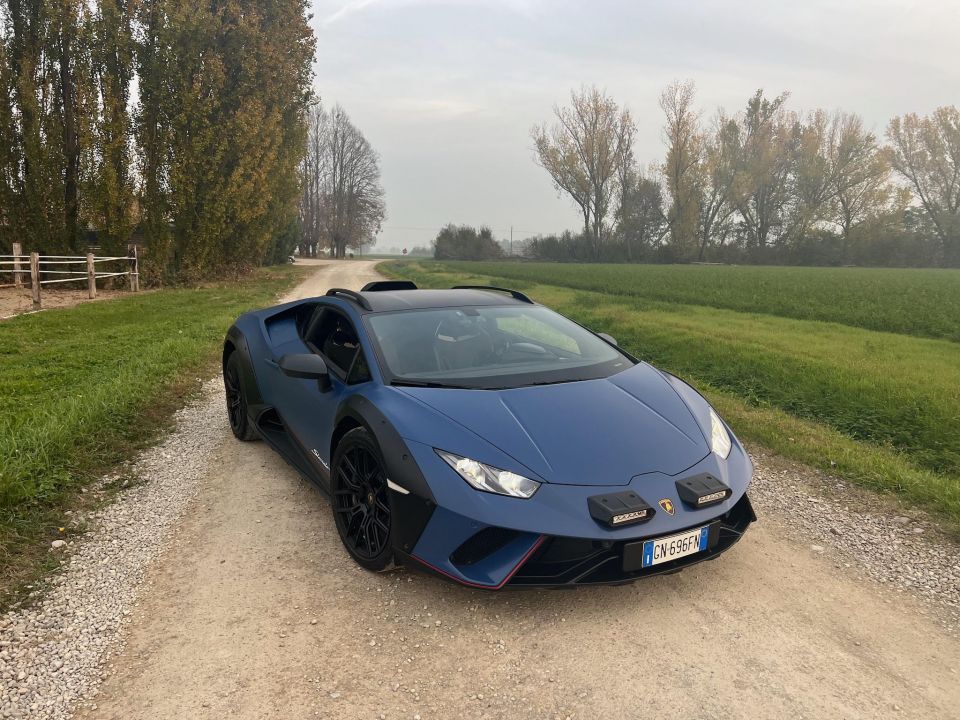
Track widths have increased too by 30mm for the front and 34mm in the rear. No doubt for greater presence, better handling characteristics and to accommodate Sterrato’s substantial Bridgestone Dueler runflats with tread blocks never before seen on a super sports car.
There’s also proper 4×4 underbody protection too, with an aluminium skid plate up front, as well as reinforced sills. And to cap it off our tester also had the optional light bars mounted low on the front bumper in an aesthetic protective cladding.
All this, and it’s still a blisteringly quick Lamborghini supercar.
The Lamborghini Huracan Sterrato is priced from $503,949 before on-road costs and any customisation through the Lamborghini’s ‘Ad Personam’ program, which includes the choice of 350 external colours and over 60 colours for the leather and Alcantara interior.
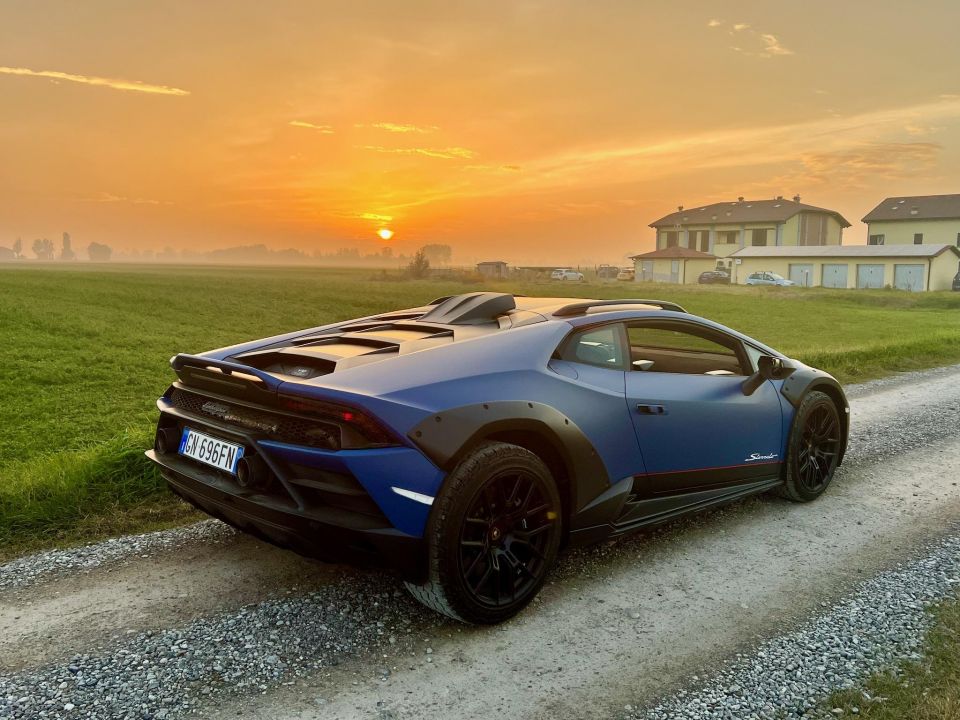
In the Huracan model line-up, the Sterrato sits under the range-topping STO ($596,000) and Huracan EVO Spyder AWD ($505,385).
Entry-level into Huracan ownership in Australia is the EVO RWD from $384,187 plus on-roads.
There is just one rival to the Lamborghini Sterrato – the Porsche 911 Dakar. This was released in June 2023 and priced from $491,400 plus on-roads. The optional Rally Design Package adds $54,730.
Buy your new car without the stress. It's fast, simple and completely free.

Great service from Travis and team, second time I have used this business would not hesitate to recommend them to anyone
Craig C.
Purchased a Ford Ranger in Sunshine Coast, QLD
CarExpert helped Craig save thousands on his Ford Ranger, now let us save you on your next new car.
Find a dealThere’s nothing like climbing into a Lamborghini (any Lamborghini) for a sense of theatrics, driver focus and Italian style and craftsmanship. In this department the Sterrato doesn’t disappoint.
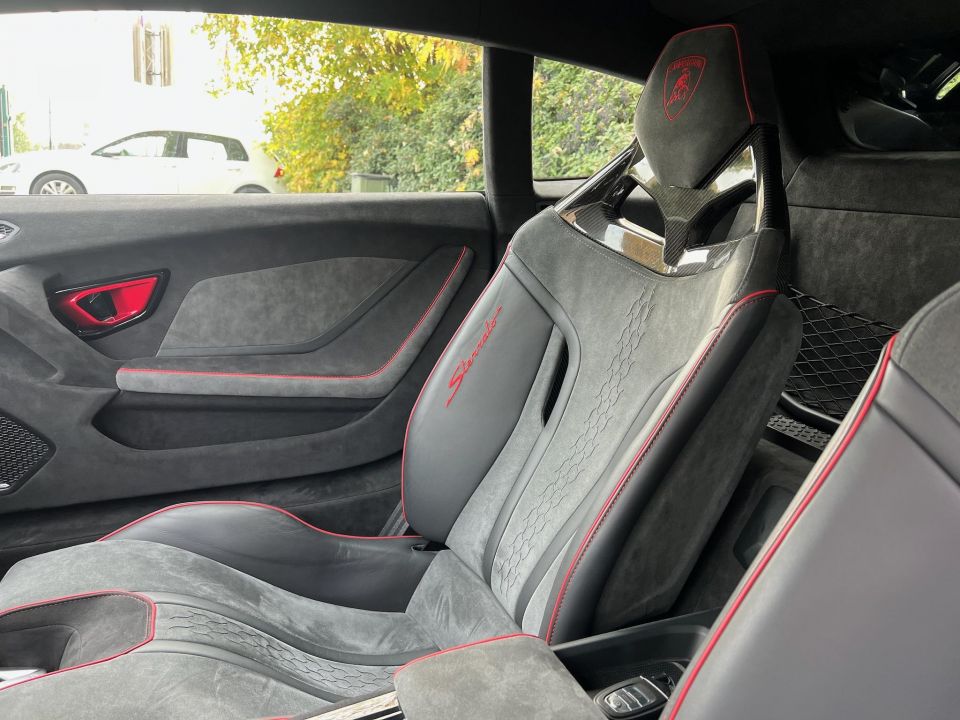
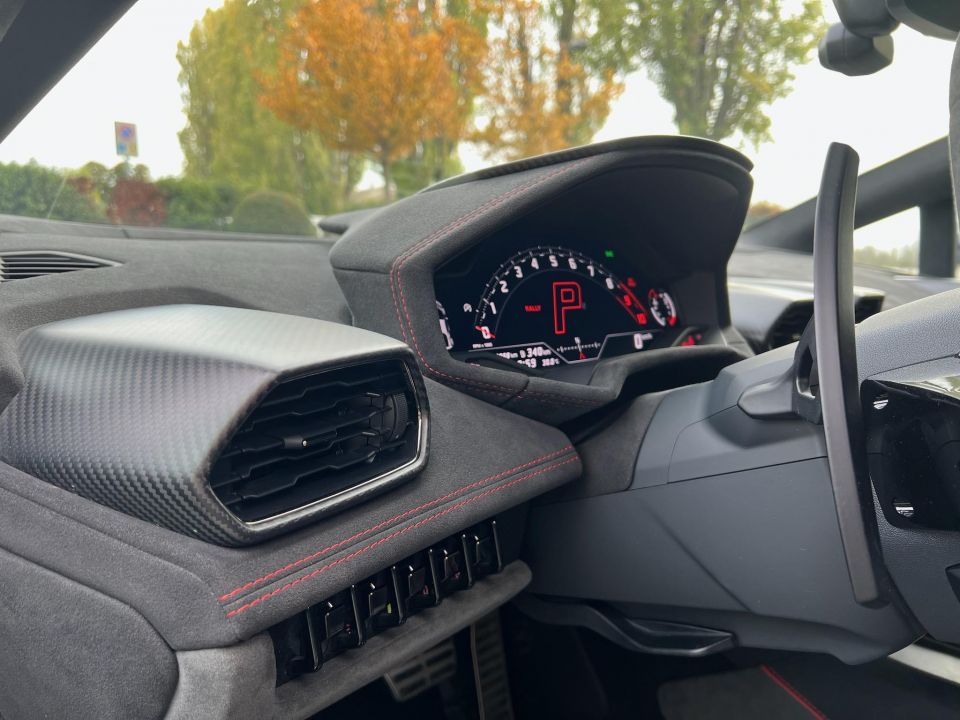
The Sterrato might ride slightly higher than any other Lamborghini supercar in history, but it’s still an ultra-low set seating position that effectively buries your butt just millimetres above the heavy-duty floor mats. Honestly, getting in and out doesn’t feel any different to the Huracan EVO.
It’s not just the low-set seating that looks and feels the part. The seats themselves include an exposed carbon-fibre frame with ‘Sterrato’ embroidered on the leather side bolsters, while Lamborghini’s emblem features on the headrests.
Our tester was upholstered in wall-to-wall Alcantara, along with leather bolsters, as well as red piping and stitching to match the exterior accents on the front bumper and sills.
There are a few very cool matte colour options that would better enhance Sterrato’s unique bodywork when compared with our tester’s Blu Grifo paintjob. Those few (in my opinion) include: Arancio Bruciato, Bronzo Zenas, Verde Turbine and Verde Gea.
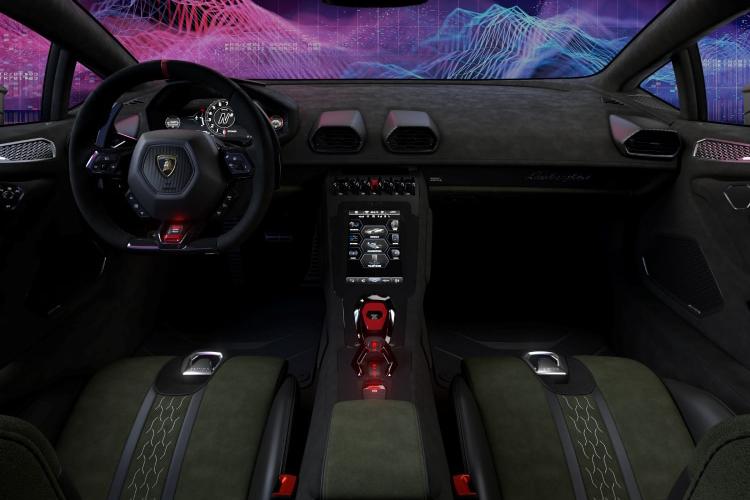
The Alcantara extends the full width of the dashboard, door cards and even the canopy that surrounds the huge digital driver’s display, which by the way is endlessly configurable as well as changing with the various drive modes.
And for the first time in a Lamborghini supercar, the central touchscreen – dubbed Human Machine Interface (HMI) – includes a few unusual features such as: a digital inclinometer with pitch and roll indicator; a compass; and a steering angle indicator and geographic coordinate indicator – for all those off-road excursions of course.
The vibrant red theme continues with what I love referring to as the ‘weapons hot’ lever (stop/start), door pulls and drive mode selector located on the steering wheel.
There’s nothing more satisfying than flipping that fire-engine-red cover and firing up the naturally aspirated V10. It is now a bona fide trademark of the Raging Bull brand.
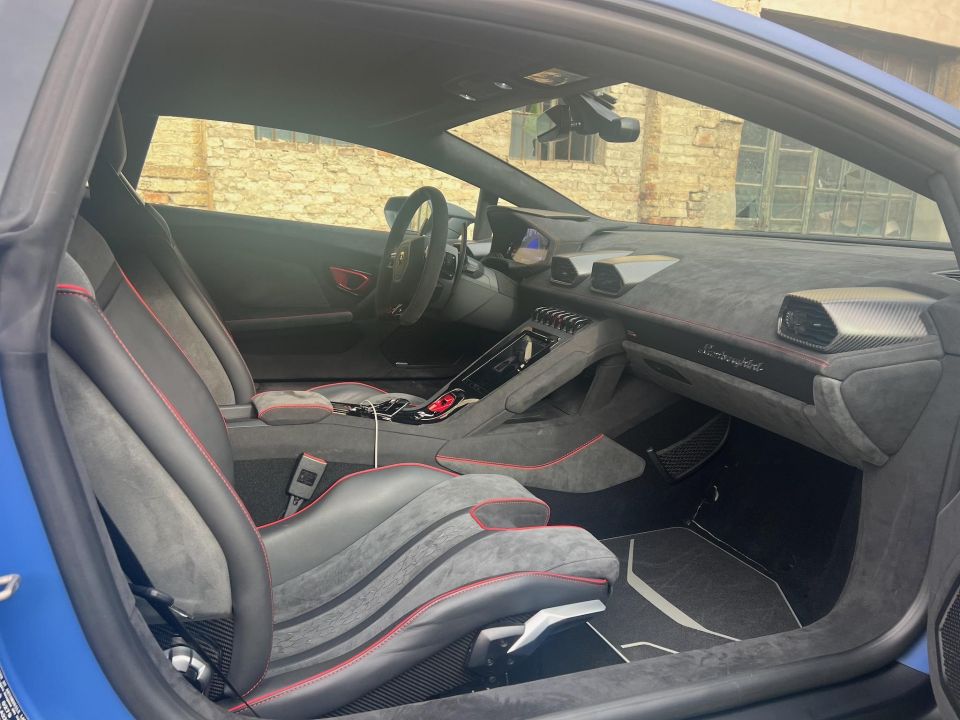
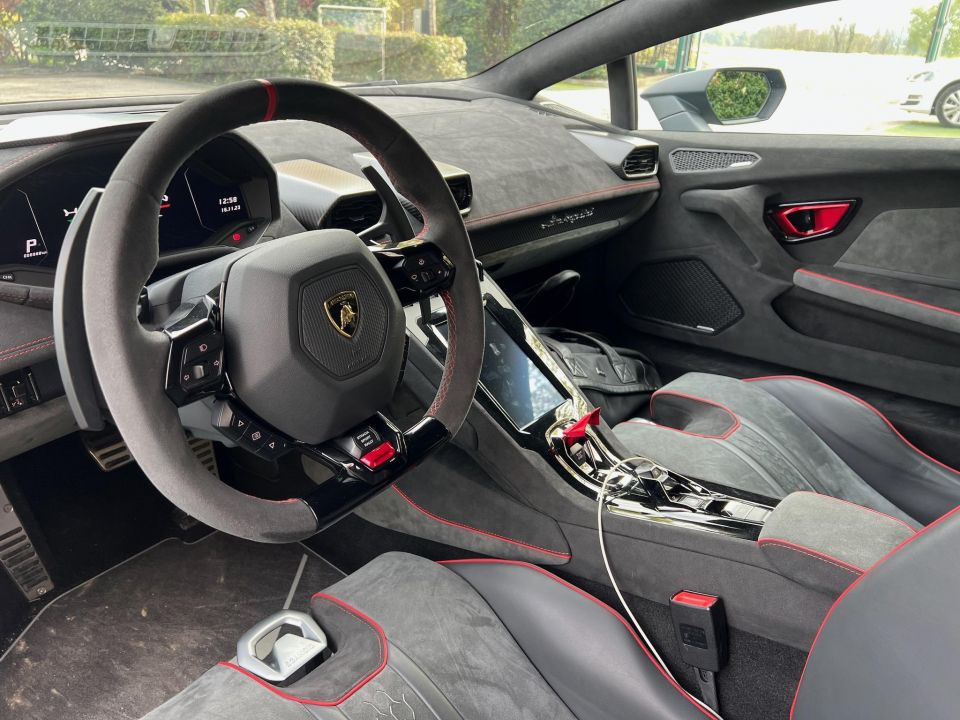
If you don’t have an iPhone, Lamborghini Connect integrates with Amazon Alexa which allows drivers to control navigation, phone calls, air-con and entertainment using voice commands.
Interestingly, Apple Watch users can sync their heart rate with the on-board telemetry system during high-speed track work, while at the same time using the Lamborghini Drive Recorder to capture those most memorable moments behind the wheel of the Sterrato. Well worth the self-imposed tutorial to figure out how to work this stuff before you set off.
Space up front is only adequate for phone, keys and wallet but either way, you’ll need to be properly organised. Nevertheless, there’s more storage/luggage space behind the seats with netting to keep things in place, while in the trunk there’s 100 litres for cabin bags or one or two soft overnight bags.
The Lamborghini Huracan Sterrato shares its 5.2-litre naturally aspirated V10 powertrain with its rear-wheel drive EVO stablemates. It is tuned to produce 449kW of power and 560Nm of torque with a none-too-shabby redline set at 8500rpm.
It can launch from 0-100km/h in 3.4 seconds and has a top speed limited to 260km/h (down from 325km/h in the EVO AWD variants).
Note, all-wheel drive EVO versions make 470kW and 600Nm, but given Sterrato’s proper all-terrain capability, you can understand the slight detune. It’s not something that’s immediately noticed or felt when you first punch it on the autostrada.
It’s paired with a seven-speed dual-clutch gearbox that sends power to all four wheels, as well as benefiting from a rear mechanical self-locking differential.
Sterrato also gets recalibrated drive modes for optimum traction on unsealed roads, or dare I say, goat tracks on the farmlands around Parma or my favourite pizza restaurant (Maggi) just down the road from the factory gates in Sant’Agata Bolognese.
For comparative purposes, the Porsche 911 Dakar uses a rear-mounted 3.0-litre twin-turbo flat-six producing 353kW and 570Nm to all four wheels through an eight-speed PDK transmission.
It’s 0-100km/h performance matches the Sterrato, but the top speed is less at 240km/h.
The Sterrato is equipped with am 80-litre fuel tank and has a combined fuel consumption of 14.9L/100km on the WLTP cycle.
I can’t tell you the thrill of arriving at Lamborghini’s HQ in the tiny rural village of Sant’Agata Bolognese (following several months of lobbying all the right people) to get a few days in the Huracan Sterrato.
Over the last 20 years of driving some of the world’s most celebrated cars, it’s the Sterrato that feels like a top-five contender and easily one of the most exhilarating supercar experiences in decades.
The matte paint and protective bodywork alone will be enough to drive away the spit-and-polish traditionalists, whereas others, myself included, will choose to openly celebrate Sterrato’s unconventional mods as utterly desirable, never mind the rarity factor.
Lambo’s V10 makes a glorious sound even at idle, where it sits as I load up the tiny frunk with hard cabin bag and a few odds and ends, before making my way out of the factory and past a group of fans hoping to get some reasonable video footage.
I try not to disappoint fans and am keen to give it some revs for sound effect alone – but not to the point of embarrassing myself in the process. It can be a fine line given there’s every chance Lamborghini CEO, Stephan Winkelmann will be watching on.
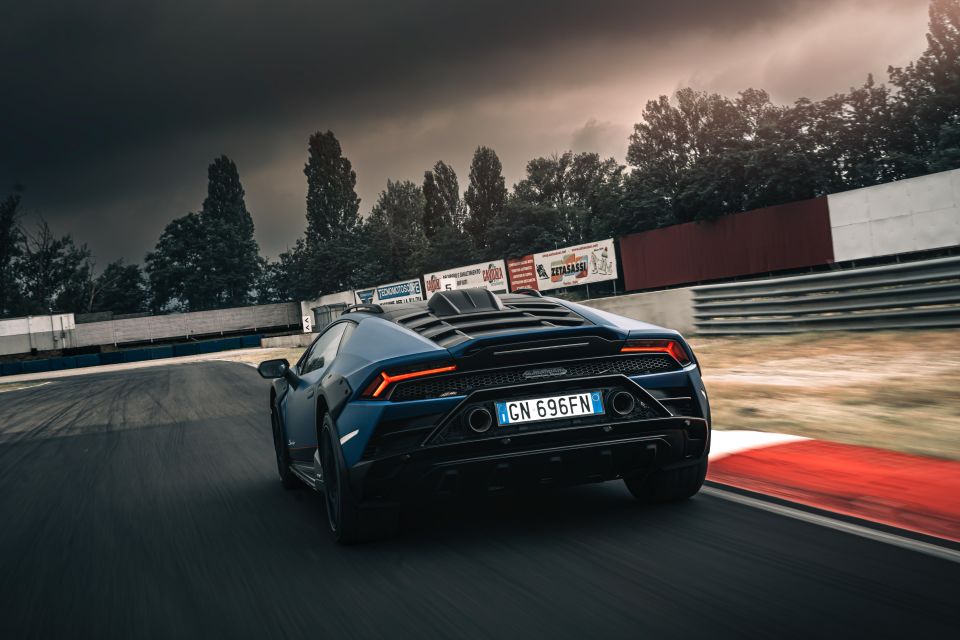
I’m heading to Parma, home of the Parmesan cheese, Parma ham (prosciutto) and some of the best tortellini dishes in Italy. My accommodation is outside of the town and surrounded by farmland and disused factories where parking is plentiful and the risk of damage negligible.
Interestingly, only 4.0 per cent of Lamborghini’s production ends up in Italy, so it’s not as though you see Ferraris and Lamborghinis out and about every day. In fact, it’s quite a rare treat. Italians of all ages go nuts whenever they get the chance to get up close and personal with one.
As always, you tend to head off in the least excitable Strada mode but end up switching to Sport within a few hundred metres, both for the sound effects, as well as a sharper throttle and slightly meatier steering feel.
While the Sterrato’s seven-speed DCT ‘box is pretty much bang on in terms of shifting and speed calibration – you still end up using the paddle shifters simply because it feels so good, and sounds even better, as you drop down two gears in a split second while approaching the next bend.
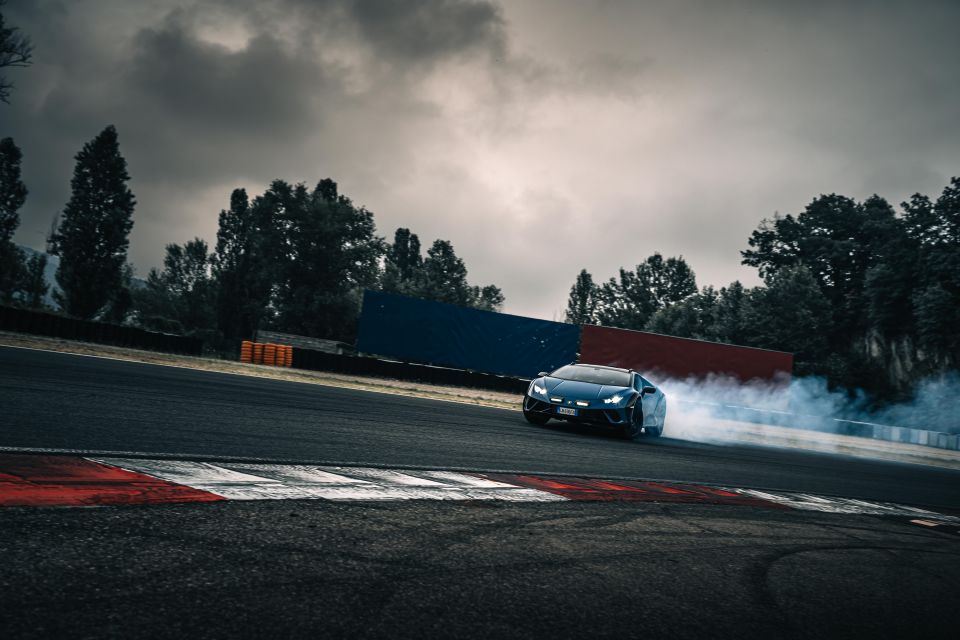
It’s the same thing when you’re flying along the autostrada and upshifting at 6000rpm plus – there’s nothing quite so sonorous as pulling the right-hand paddle, which rewards you with some of the greatest throttle blips you’ve ever heard. It just never gets tiring.
The carbon-ceramic brakes are able to wipe off huge speeds despite the all-terrain tyres. It’s not quite as adept at stopping as the standard EVO, but it’s still massively reassuring under big braking moments.
With the extra ride height and softer springs, I was worried it wouldn’t feel quite like the supercar that I was used to after spending lots of time behind the wheel of the standard Huracan EVO and Tecnica variants.
There’s no cause for alarm. Sure, there’s a bit more pitch and roll but you’d have to be pushing at nine tenths plus to really notice it. With some properly spirited moments on deserted B-roads the Sterrato still goes like a full-blooded Lamborghini Huracan.
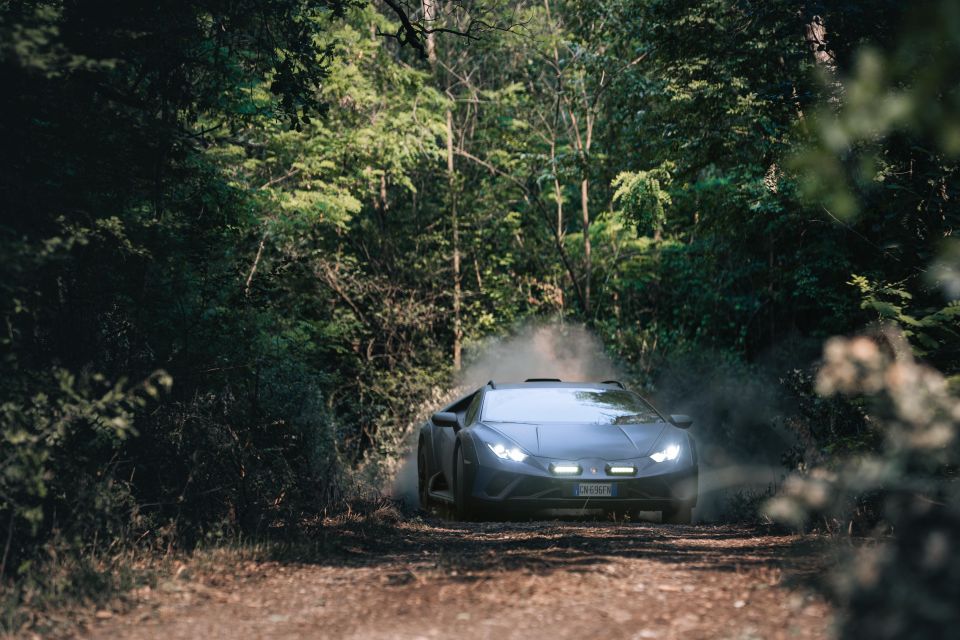
It’s blisteringly quick off the line and has serious in-gear acceleration with sound body control through high-speed corners. No complaints whatsoever from me.
I’ve managed to get the hotel manager to leave his post (it’s mid-week and it’s quiet) and shoot some reels for me through a short tunnel nearby. But there’s a bend in the road on exit and a decent old dip in the tarmac that would normally be disastrous in any other supercar – not so in the Sterrato.
We enter at around 140km/h and the dip has no effect on the car’s composure. None at all. Miraculous and testament to those longer springs and dampers and the extra suspension travel they afford.
There’s not a lot of vision out the back window (almost non-existent) but you’ll soon learn to make better use of the side mirrors and rear-view camera. It’s more of an inconvenience than a problem.
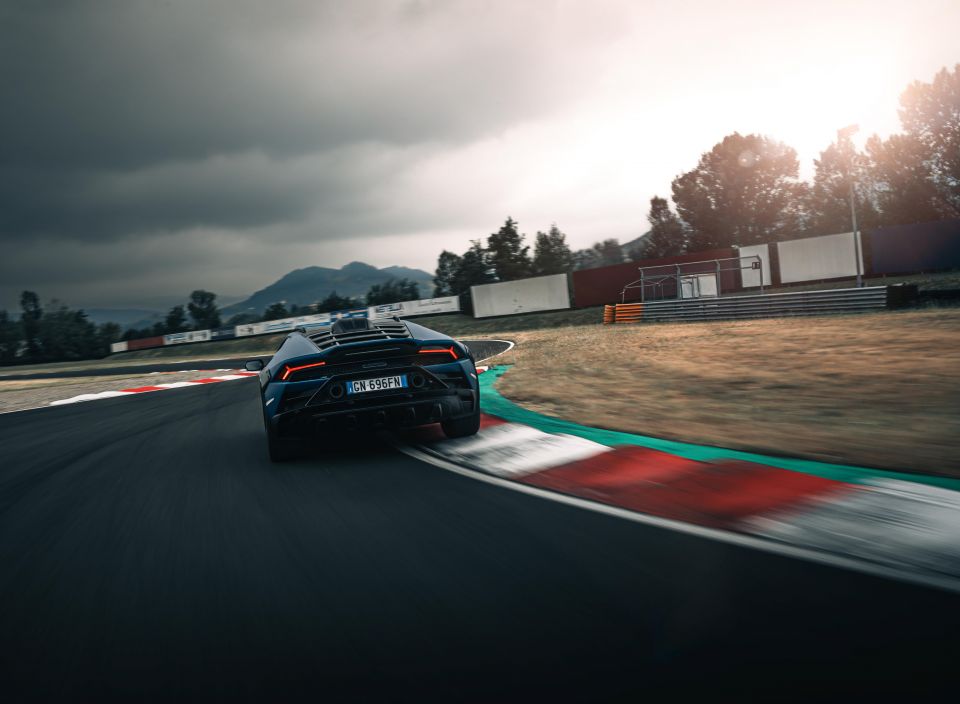
It’s also this significantly wider breadth of ability that makes the Sterrato the car to own over any other Huracan variant, simply because this a supercar with daily driver written all over it. Never mind those steep under-house driveways that weren’t previously accessible.
The overall balance between ride, comfort, handling and performance is as near to perfect as is engineeringly possible in my view. It also makes the Sterrato the most captivating and fun-to-drive supercar ever built. It’s also a car that probably shouldn’t be limited in numbers either, given the uprated practicality and sheer fun factor involved.
No sooner had the enthusiastic hotel manager gone back to his front desk and we were ready to tackle dirt roads on-route to local farms in search of picturesque stills of the Sterrato at sunset and in its habitat.
There’s no Corsa setting; instead, Sterrato gets Rally mode, but I’ve been in that for a while on the road – now on the dirt. It can get a little loose on the gravel sections but it’s easily tamed should the rear step out. Mind, I’m still a bit nervous about marking up a Lambo or getting stone chips on the bonnet, but do it anyway.
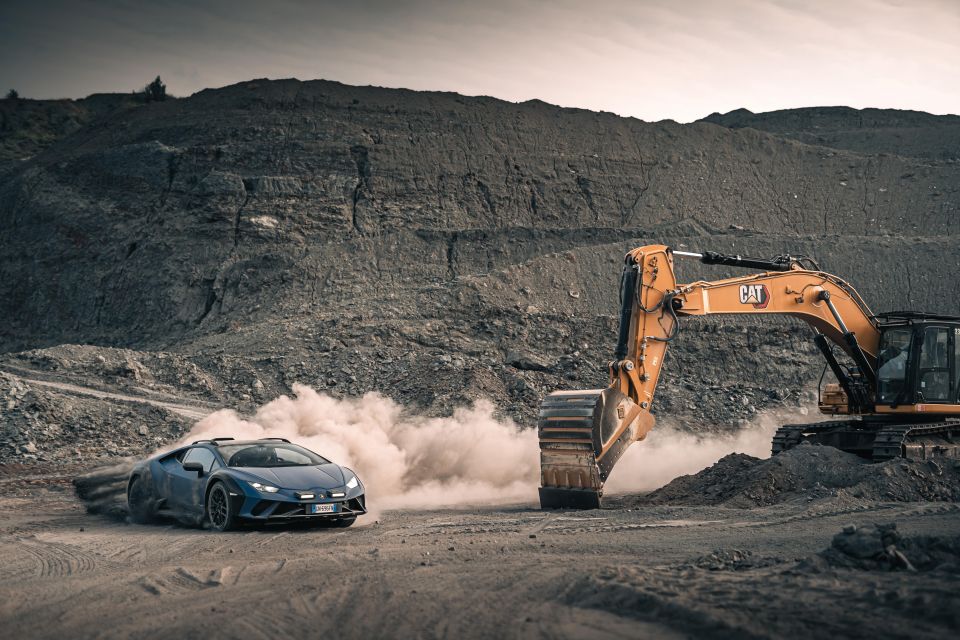
Where expert car reviews meet expert car buying – CarExpert gives you trusted advice, personalised service and real savings on your next new car.
It’s not just the most fun you’ll ever have in a supercar, it’s also utterly addictive and unlike any other exotic I’ve driven to date.
Interestingly, when I parked outside Ristorante Cocchi in Parma Centrale, there happened to be a spanking new 911 Dakar parked as well, but when it came time to leave, the entire complement of staff came out to hear the Sterrato on start-up. No one seemed to notice the Dakar, except me.
In Italy, Lamborghini is as revered as Ferrari. The passion the public has for these glorious exotics is as addictive as the cars themselves.
The vast majority of Lamborghinis are customised with any number of options but Sterrato adds a few unique features given its unique off-road capability.
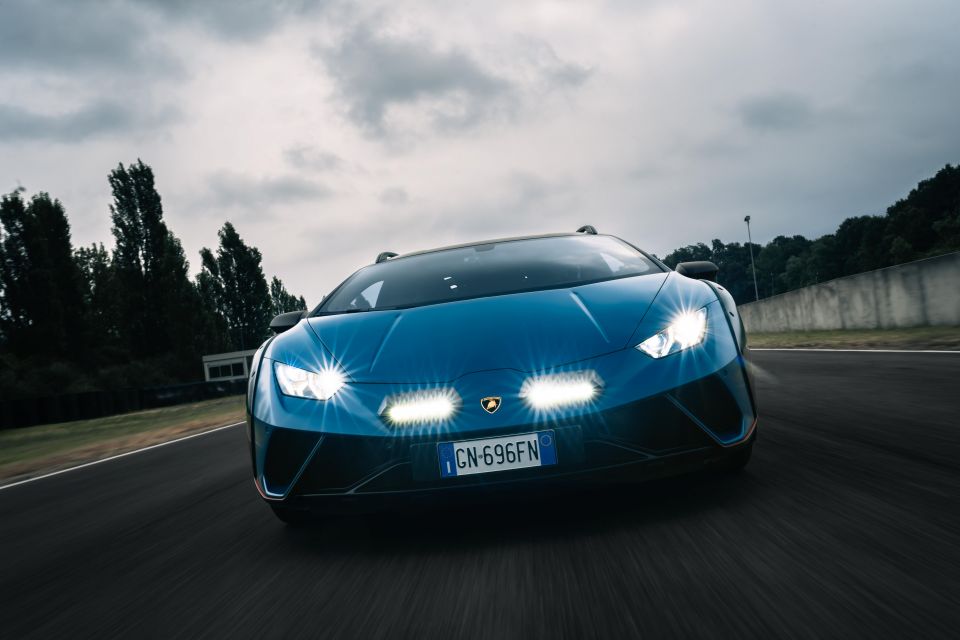

Highlights include:
Like all luxury sportscar manufacturers Lamborghini doesn’t crash test its vehicles so there’s no ANCAP safety rating.
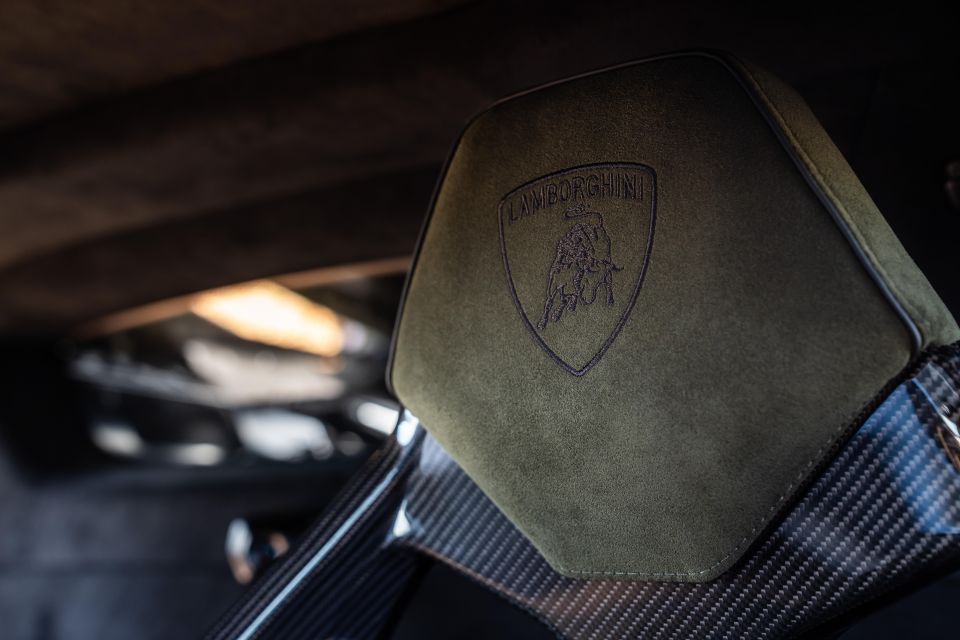
Nevertheless, and like all Huracan variants, the Sterrato is fitted with front, side and knee airbags, along with the standard electronic stability control, anti-lock brakes, lane departure warning, adaptive cruise control and autonomous emergency braking.
Lamborghini provides a three-year warranty across all models, but owners can extend the warranty up to eight years.

The Huracan is similar to the Audi R8 and goes through an A and B service cycle and prices range from around $1500 to $4500 depending on the extent of work carried out.
While I was craving the opportunity to test drive the Huracan Sterrato, I also didn’t quite know what to expect of a ‘high-riding’ supercar.
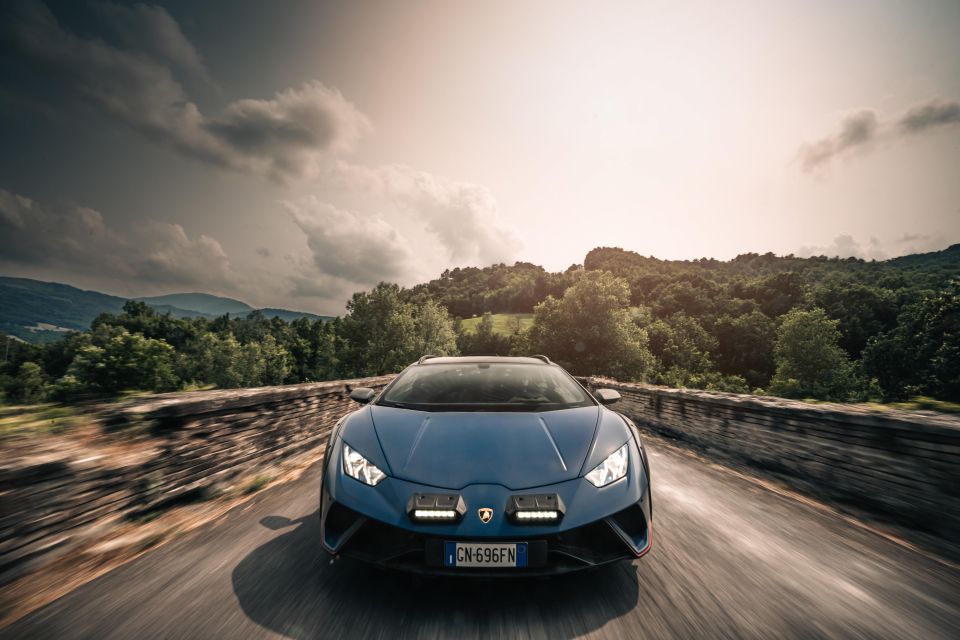
But, just one look at this thing and I was ready to sell the house and become a bona fide Lamborghini owner.
It’s not only one of my all-time greatest driving experiences, it’s also the first supercar I’ve ever driven where you’re not constantly worried about damaging it on the approach to an unfriendly driveway, a nasty approach angle to a carpark, or indeed stone chips on front and rear guard panels.
And let’s not forget the comfort of off-road suspension that seemingly absorbs any and all sized potholes and speed bumps. It would be a good car for Nairobi.
There’s just not enough of them being built.

Click the images for the full gallery
BUY: Lamborghini Huracan MORE: Everything Lamborghini Huracan
Where expert car reviews meet expert car buying – CarExpert gives you trusted advice, personalised service and real savings on your next new car.
Anthony Crawford is a CarExpert co-founder and senior presenter with 20+years in automotive journalism and content creation.


Damion Smy
8 Hours Ago


Damion Smy
10 Hours Ago


Damion Smy
11 Hours Ago


Matt Robinson
14 Hours Ago


Damion Smy
14 Hours Ago


Damion Smy
1 Day Ago